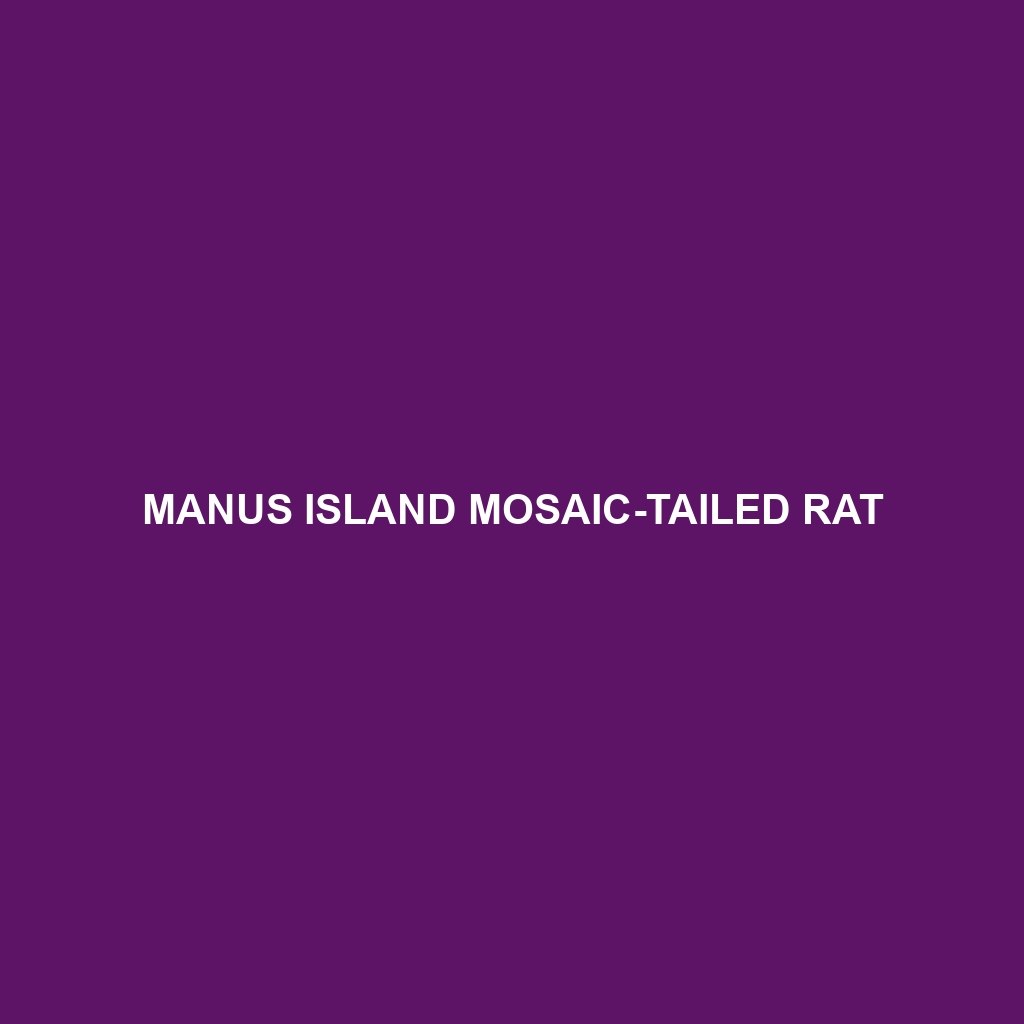Species Description: Manus Island Mosaic-tailed Rat
Common Name: Manus Island Mosaic-tailed Rat
Scientific Name:
Habitat
The Manus Island Mosaic-tailed Rat is predominantly found in the lush, tropical forests of Manus Island, located in Papua New Guinea. This rodent thrives in lowland rainforests and is often spotted near riverine environments, where dense vegetation provides ample shelter. Its habitat serves as a critical zone for biodiversity, hosting various flora and fauna unique to this region.
Physical Characteristics
This species exhibits a distinctive mosaic pattern on its tail, which is often a topic of interest among observers. The Manus Island Mosaic-tailed Rat typically weighs between 300 to 500 grams and measures approximately 20 to 30 centimeters in body length, excluding the tail. Its fur is usually a rich brown color intermixed with lighter shades, providing excellent camouflage among the forest floor. Notably, its large ears and prominent eyes contribute to its acute sense of hearing and sight, essential for navigating dense environments.
Behavior
The Manus Island Mosaic-tailed Rat is primarily nocturnal, exhibiting peak activity during the nighttime hours. It is known for being an agile climber, often seen foraging for food in trees as well as on the ground. This species is social in nature and tends to live in small family units, engaging in playful behaviors that strengthen their communal bonds. Their unique foraging methods and vocal communications are especially notable, attracting the interest of researchers and wildlife enthusiasts alike.
Diet
This rat primarily feeds on fruits, seeds, and various plant materials, making it an essential seed disperser in its ecosystem. Its diet also includes insects and other small invertebrates. The Manus Island Mosaic-tailed Rat plays a vital role in controlling pest populations, and its feeding habits significantly impact the growth of vegetation in its habitat.
Reproduction
Reproductive activities of the Manus Island Mosaic-tailed Rat typically peak during the wet seasons, with females giving birth to litters of 2 to 4 offspring after a gestation period of about 30 days. The young are born blind and hairless, relying on their mother for sustenance and care during their early stages of development. Parental care is quite robust, with both parents often participating in nurturing their young.
Conservation Status
The Manus Island Mosaic-tailed Rat is currently classified as vulnerable due to habitat loss and deforestation in its native range. Conservation efforts are crucial to maintaining its population and habitat, as ongoing environmental changes pose significant threats to this unique species.
Interesting Facts
One fascinating fact about the Manus Island Mosaic-tailed Rat is its unique ability to climb and navigate through its arboreal habitat, which sets it apart from many other rodent species. Additionally, its tail serves not only as a balance tool but also as a means of communication with other members of its species, highlighting its social nature.
Role in Ecosystem
The Manus Island Mosaic-tailed Rat plays a significant role in its ecosystem as both a seed disperser and a prey species for larger predators. By aiding in plant regeneration through its dietary habits, it contributes to the health and diversity of its forest environment, demonstrating the interconnectedness of species within ecological communities.
